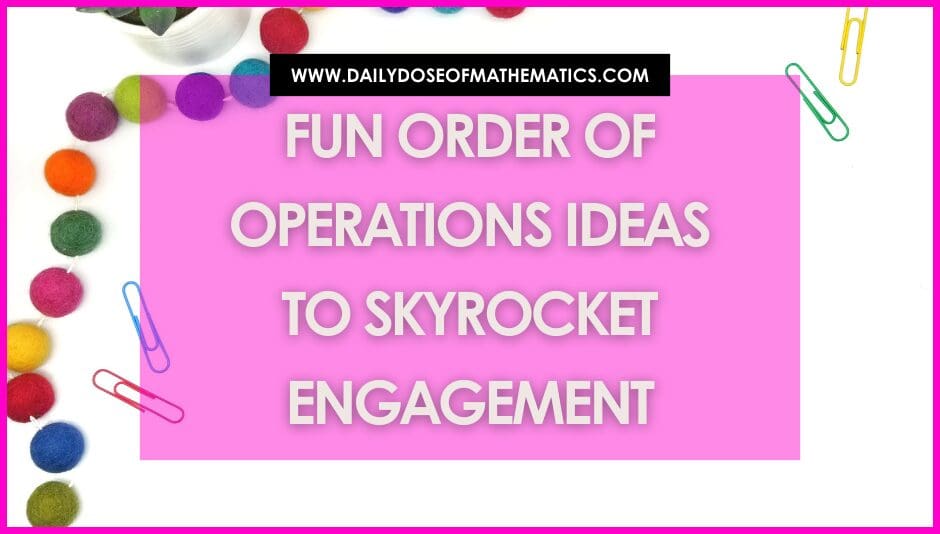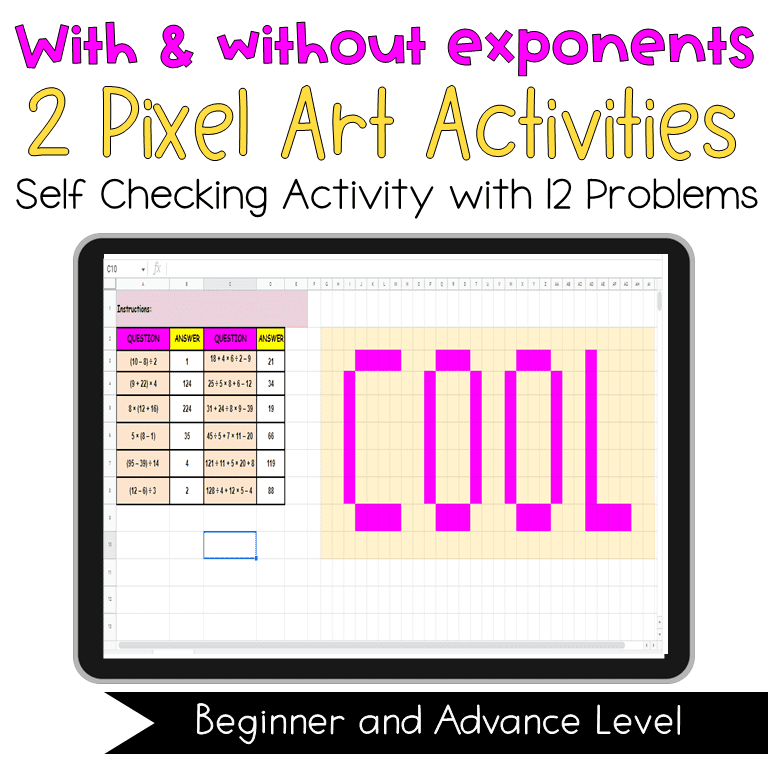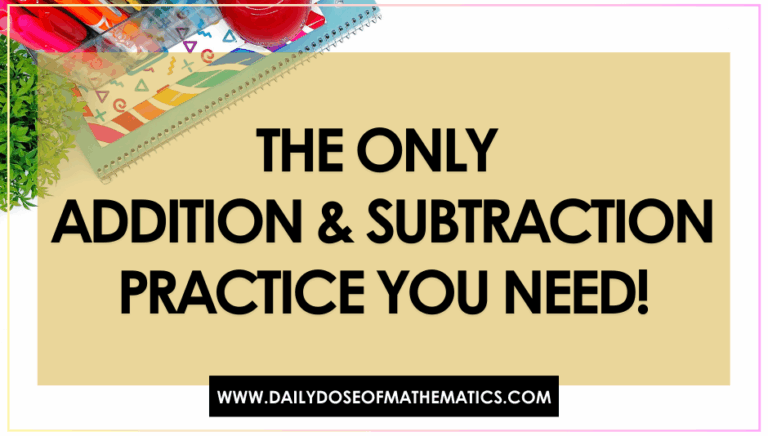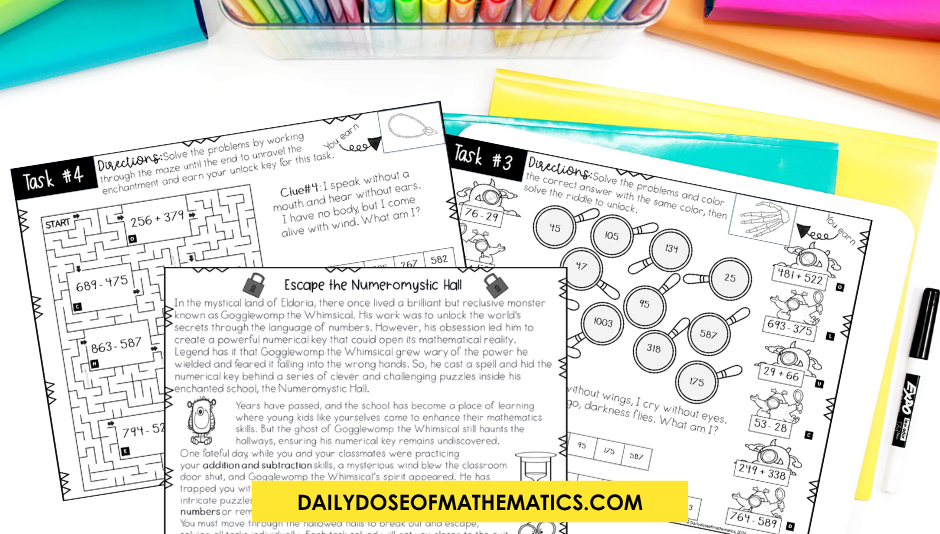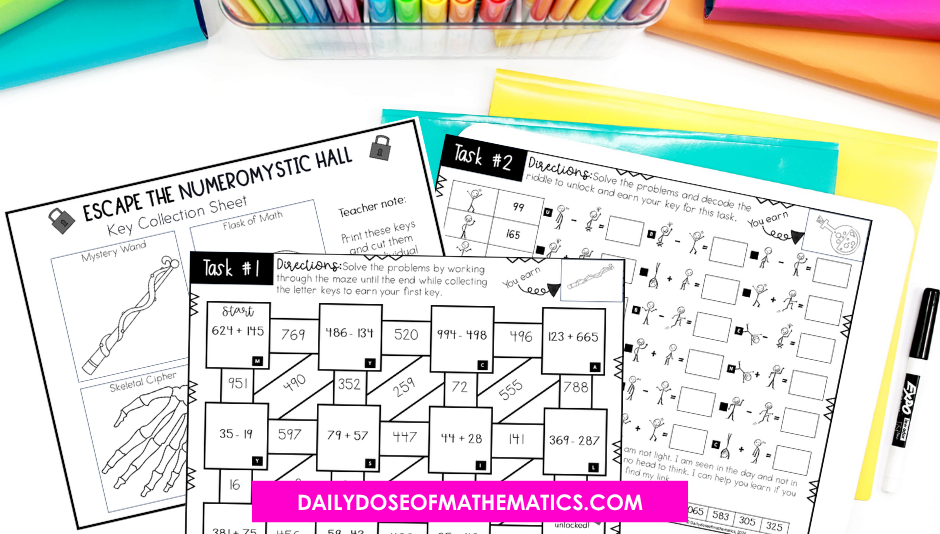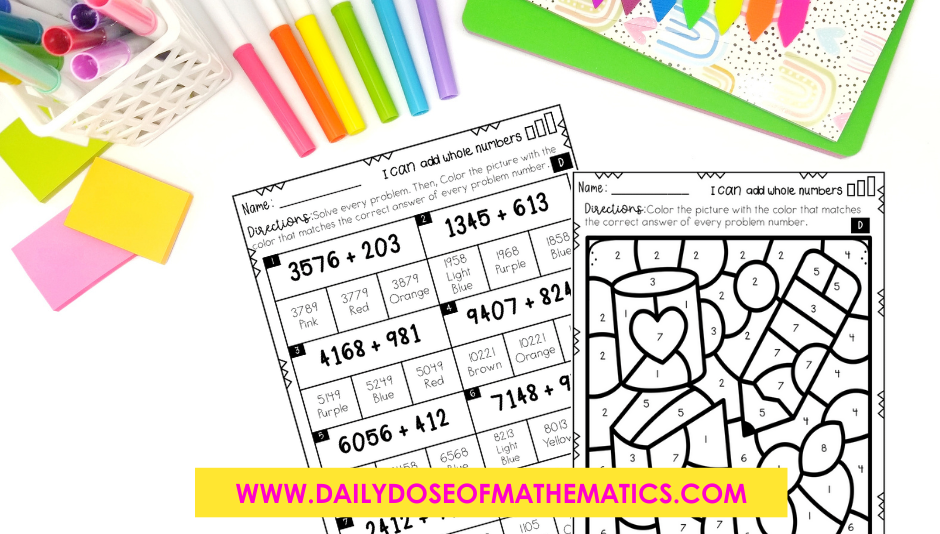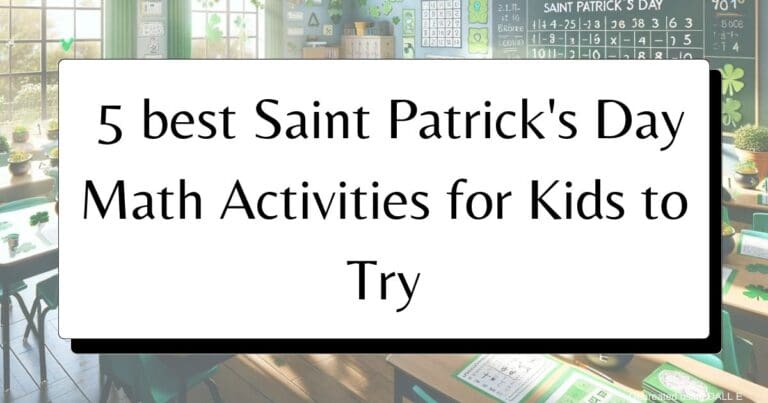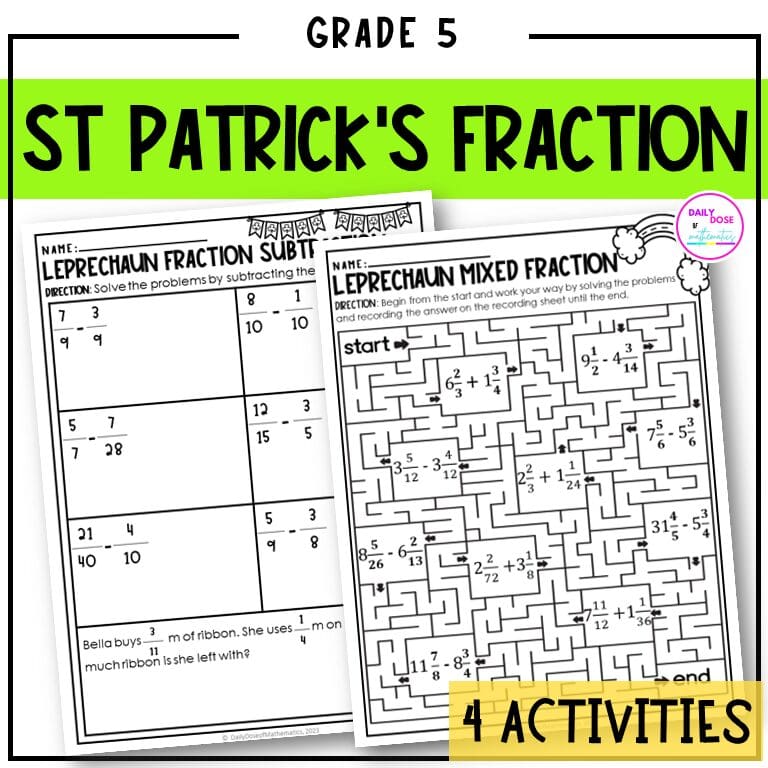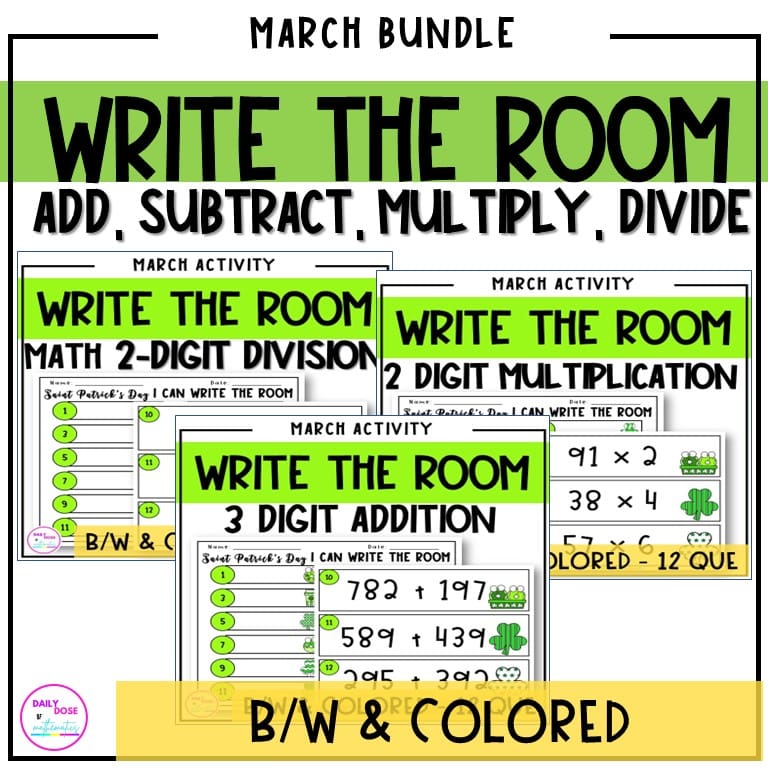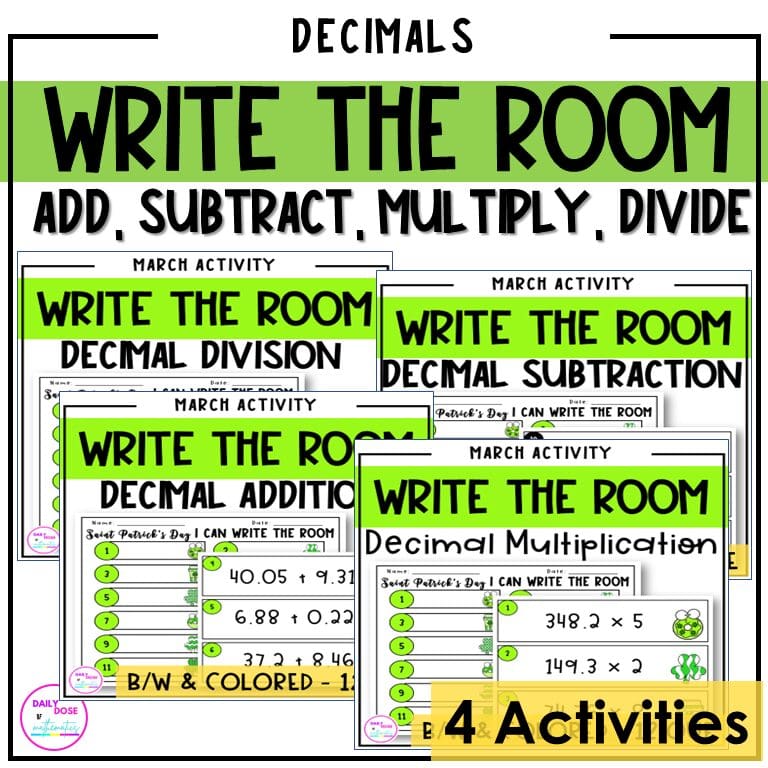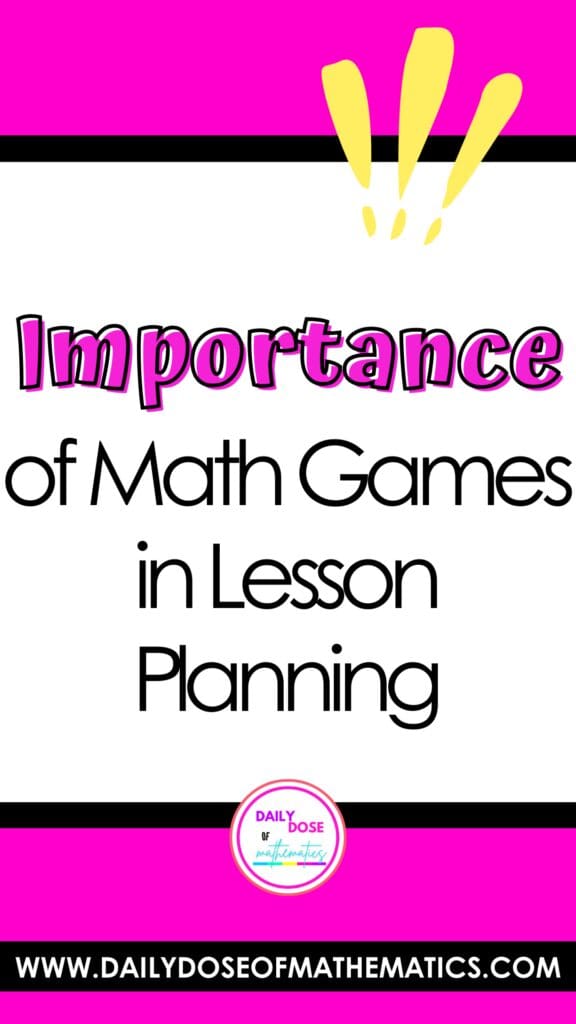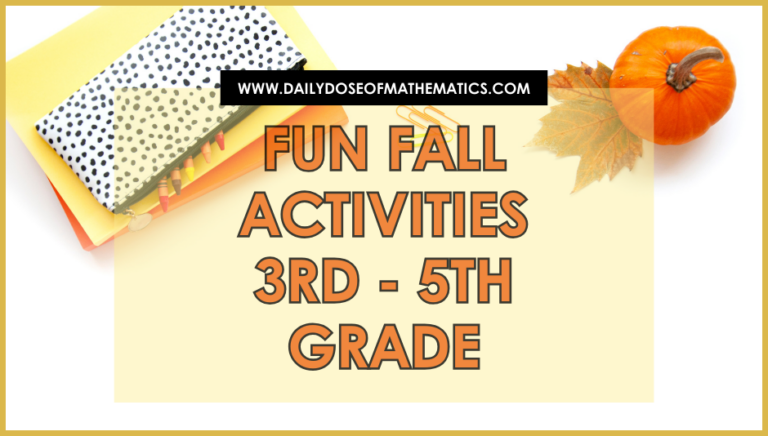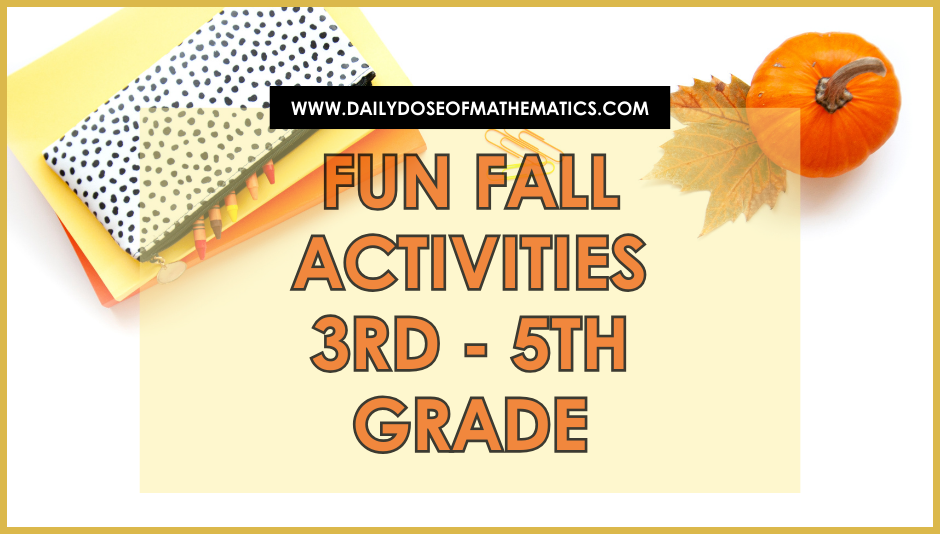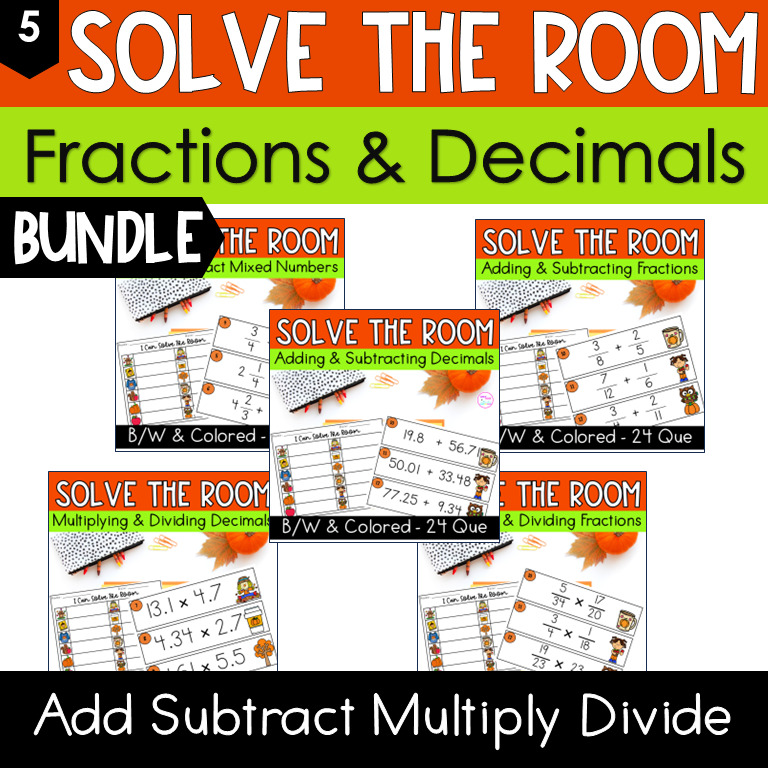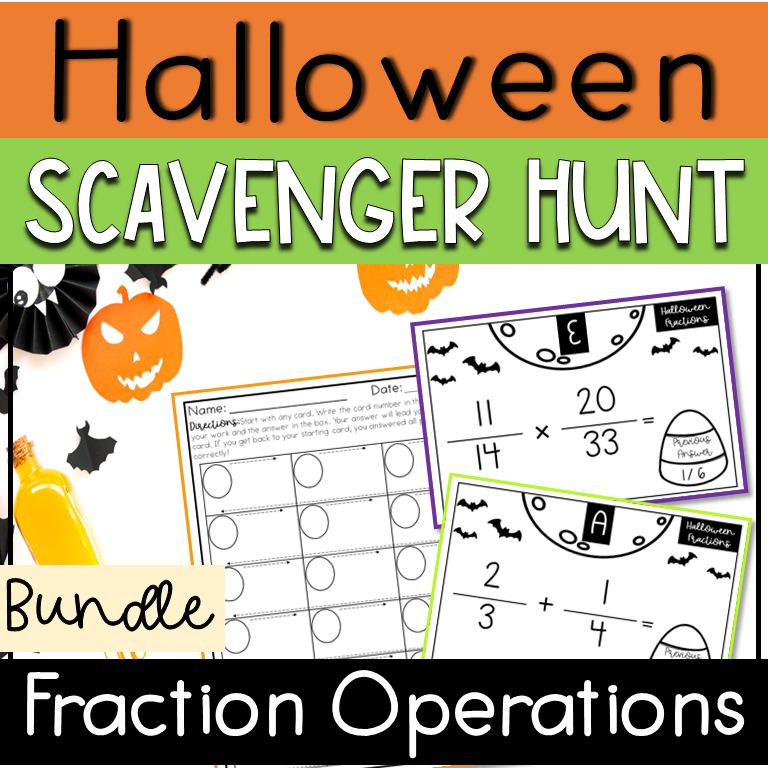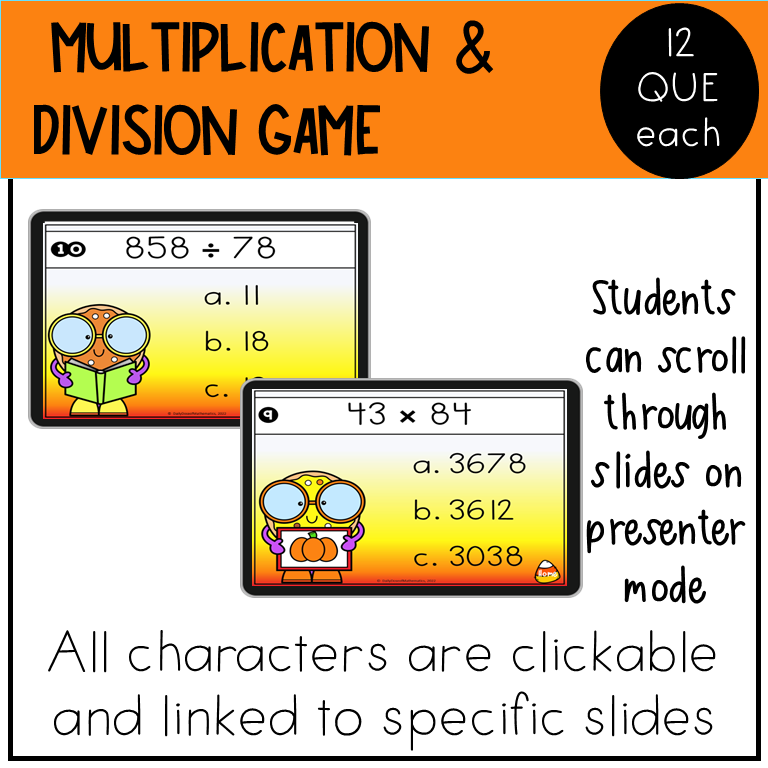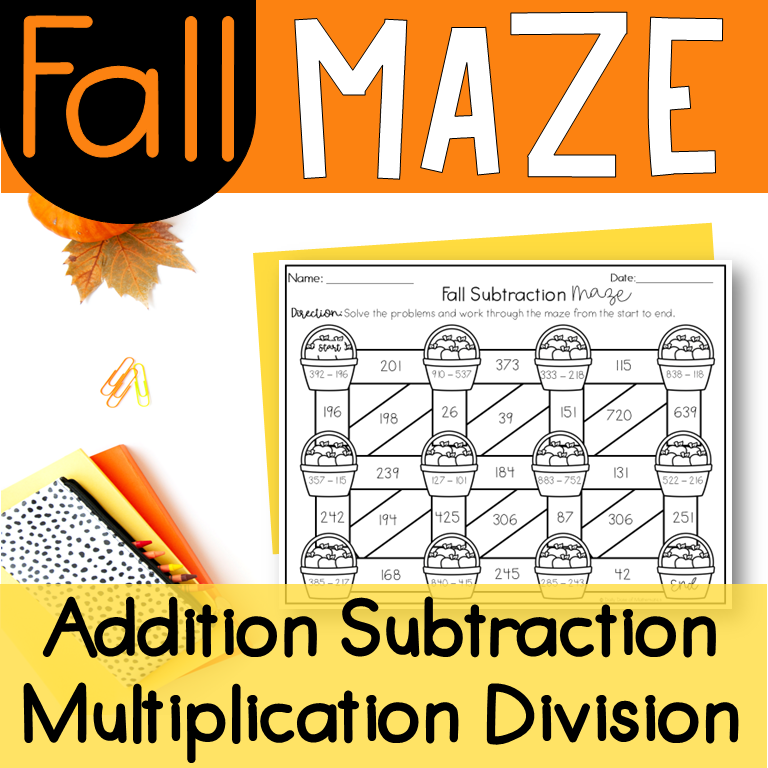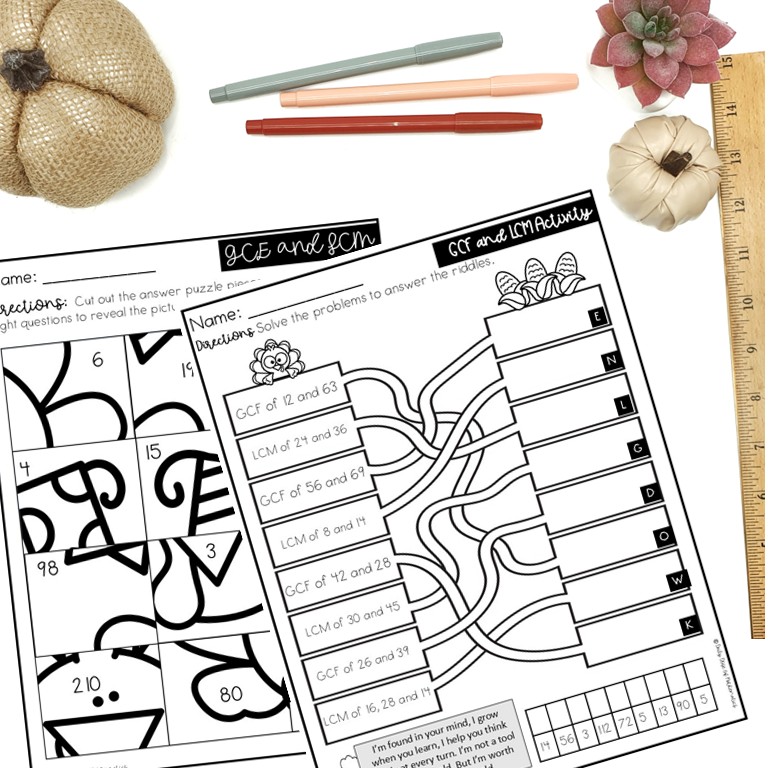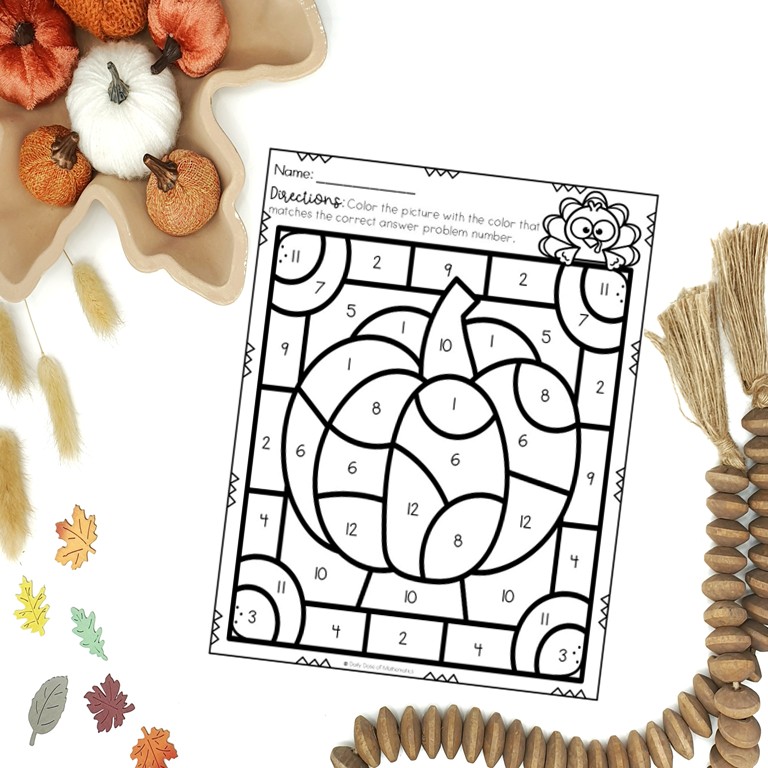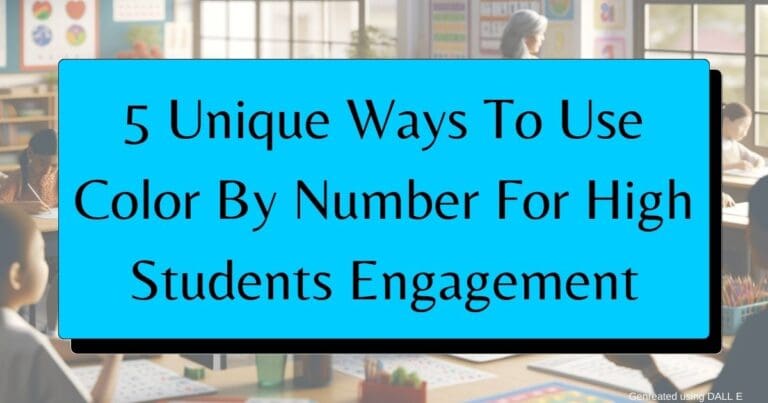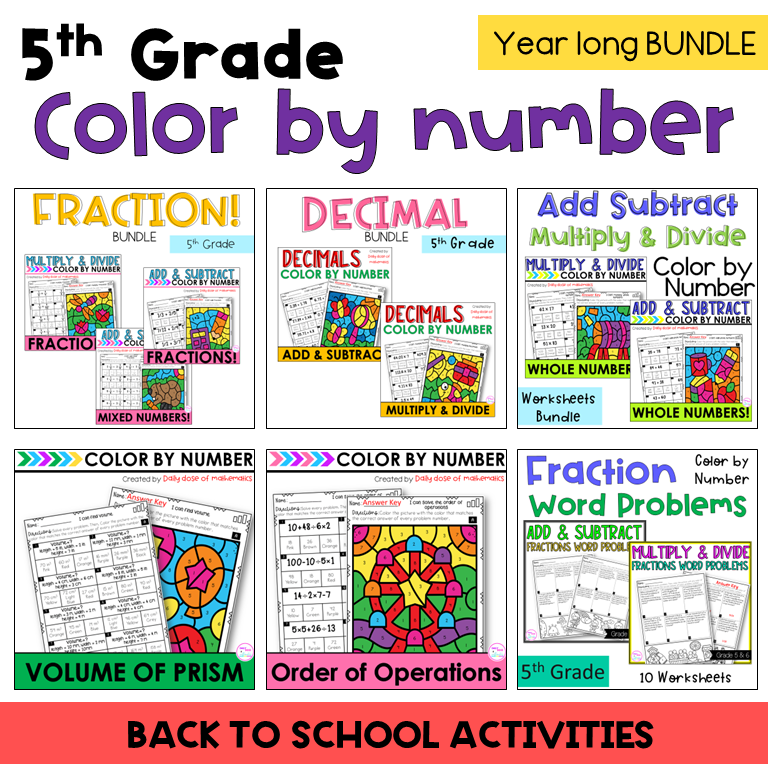Fun Order of Operations Activities to Skyrocket Engagement Now
I get it, I get it, as an upper elementary math teacher, we can teach order of operation to 5th grade students for what can feel like forever. So long that you may feel like you are running low on new ideas to teach it anymore.
If that’s the case, then consider using these 5 fun and exciting Order of Operations activities to keep your students hooked.
All these are my favorite activities. They include both printable and digital options so there is something for everyone.
Color by Number Order of Operations Activities
Getting students excited about the order of operation topic can be a challenge but not if you are using the right activities to engage and get kids to think more about the order of operation.
Students do not just need to know how to solve order of operations problems. It is equally important that kids learn why learning about the order of operations is important.
It’s a way to make sure every one of us arrives at the same answer to a particular problem.
You can teach them various strategies like “please excuse my dear aunt sally” to make it easier for them to remember.
This activity combines the key critical concepts of order of operations (PEMDAS) with the fun of coloring.
Here is how Order of Operations Activities works:
Students are given a worksheet with various math problems that they have to solve using the correct order of operations to find the answers.
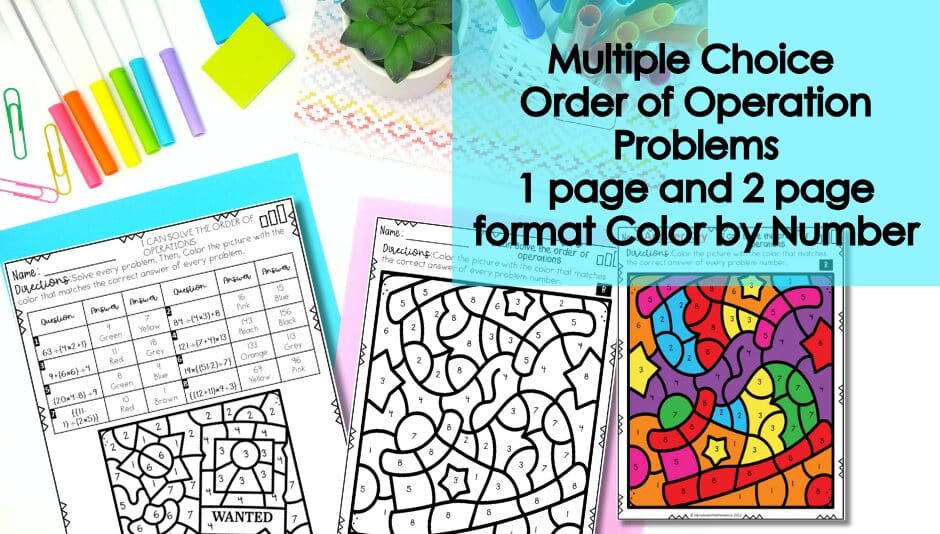
Each answer corresponds to a specific color which they will then use to color sections of a picture.
As they solve the problems correctly, a colorful image starts appearing providing students with immediate feedback and a sense of accomplishment.
Pixel Art Order of Operation Activities
Want something quick for digital stations? No worries, I got you covered.
These Order of Operations digital activities are creative and engaging at the same time so your kids won’t get bored.
The activities involve solving the order of operations problems using Google Sheets digital activity. Each correct answer reveals a portion of the pixelated image.
Students write the answers to the problems into the specific cells.
The digital activity involves practicing both types of problems: with and without exponents.
Wait, that’s not all. You will also get students handouts that go with the digital activity and keep them accountable for showing their work.
Exciting Task Cards and Story-based Maze
Capture your kid’s attention using story-based gamified learning similar to this Save the Queen Maze Activity.
In this order of operation maze activity, students look for ways to help Save the Queen Bee that is lost in the wild on her way back home.
They must correctly solve problems to help her find her way back to Hive!
And the best part you can choose to use with or without exponents to differentiate the topic.
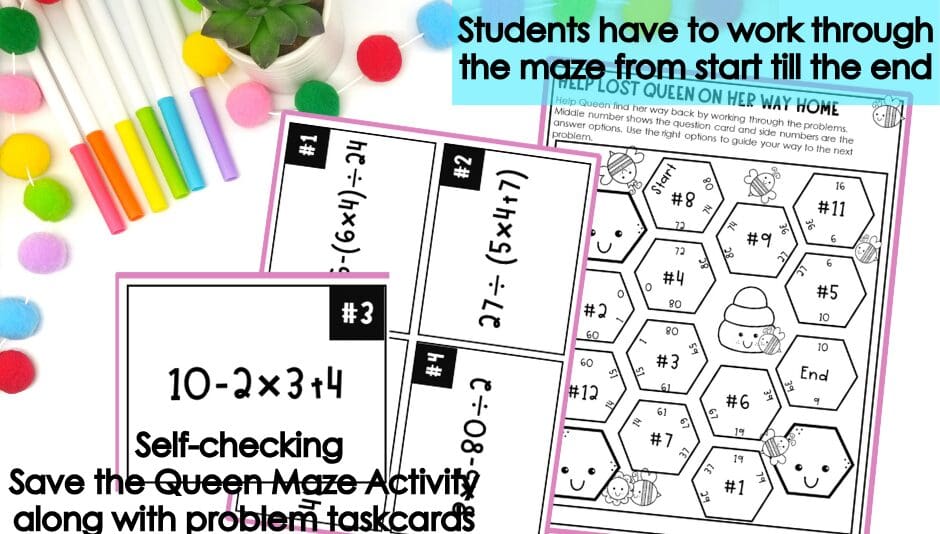
Not only this, the activity is highly engaging and self-checking so you do not have to spend time grading the papers.
In the end, use the reward card certificates for positive reinforcement for your kids.
What’s Included:
- 1 Save the Queen Game Maze Activity (Order of Operations – Beginner)
- 1 Save the Queen Game Maze Activity (Order of Operations – Advance)
- Each Maze has 12 Task Cards with different problems (A total of 24)
- 1 Colored Reward Card & Story Card
- 1 Black and white Reward Card and Story Card
- 1 Student Recording Sheet
- Answer Keys of all
Solve the Room Order of Operations Activities
This one is the most fun and dynamic activity to implement in your classroom. My kids always enjoy and look forward to playing this activity.
Their excitement is the only reason why I have to make Solve the Room activities for 5th grade Bundle, so you do not have to do the work.
Want to know how it works?
You post task cards with math problems for your students to work on at different stations or different areas of your classroom.

Then give each student a recording sheet to record their answers.
Students move around the room to find these problems, solve and record them on the given recording sheet.
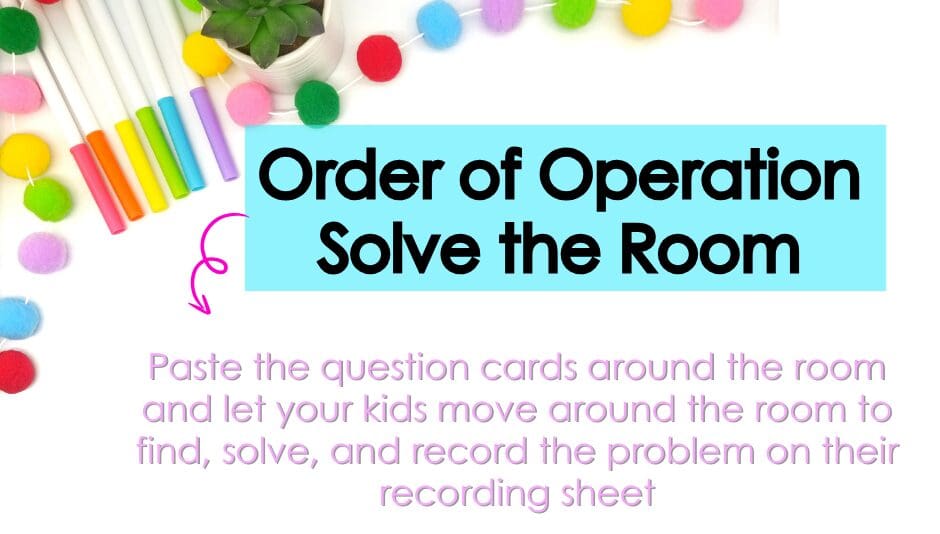
Why this is the best activity to try:
- Engagement: Traditional worksheets can sometimes bore students, but Solve the Room adds an element of excitement and movement, keeping students motivated and interested.
- Concept Mastery: Students often struggle with the order of operations. This activity offers repeated practice in a fun and hands-on way, helping kids to solidify their understanding.
- Classroom Management: By moving around the room and focusing on different problems, students are less likely to become restless or distracted, leading to better classroom management.
Free Order of Operations Practice Digital PowerPoint Game Activity
Couldn’t find something you were looking for?
No worries… here is a FREE fun activity to help your students master the order of operations?
This interactive game is perfect for bringing some cheer into your classroom while reinforcing this essential math skills.
What is it?
This engaging PowerPoint game challenges students to solve order of operations problems with a winter theme.
Each correct answer helps them progress through the game, while a wrong answer directs kids to try the problem again.
It helps to reinforce learning and makes sure that students understand the concepts before moving on.
Check out this Free Order of Operations Practice Digital PowerPoint Game Activity!
That’s a lot of content for a single topic in 5th grade math topics.
All of these activities and more are available in the lesson pack Bundle in my TPT shop.
Bundle includes:
- Digital Pixel Art Activities
- Google Slides Activity
- Order of Operations Task Cards Printable
- Order of Operation Worksheets
- Story-based Save the Queen Game
- Order of Operation Color by Number
Click to learn more about 5th grade math teaching lesson and ideas.

